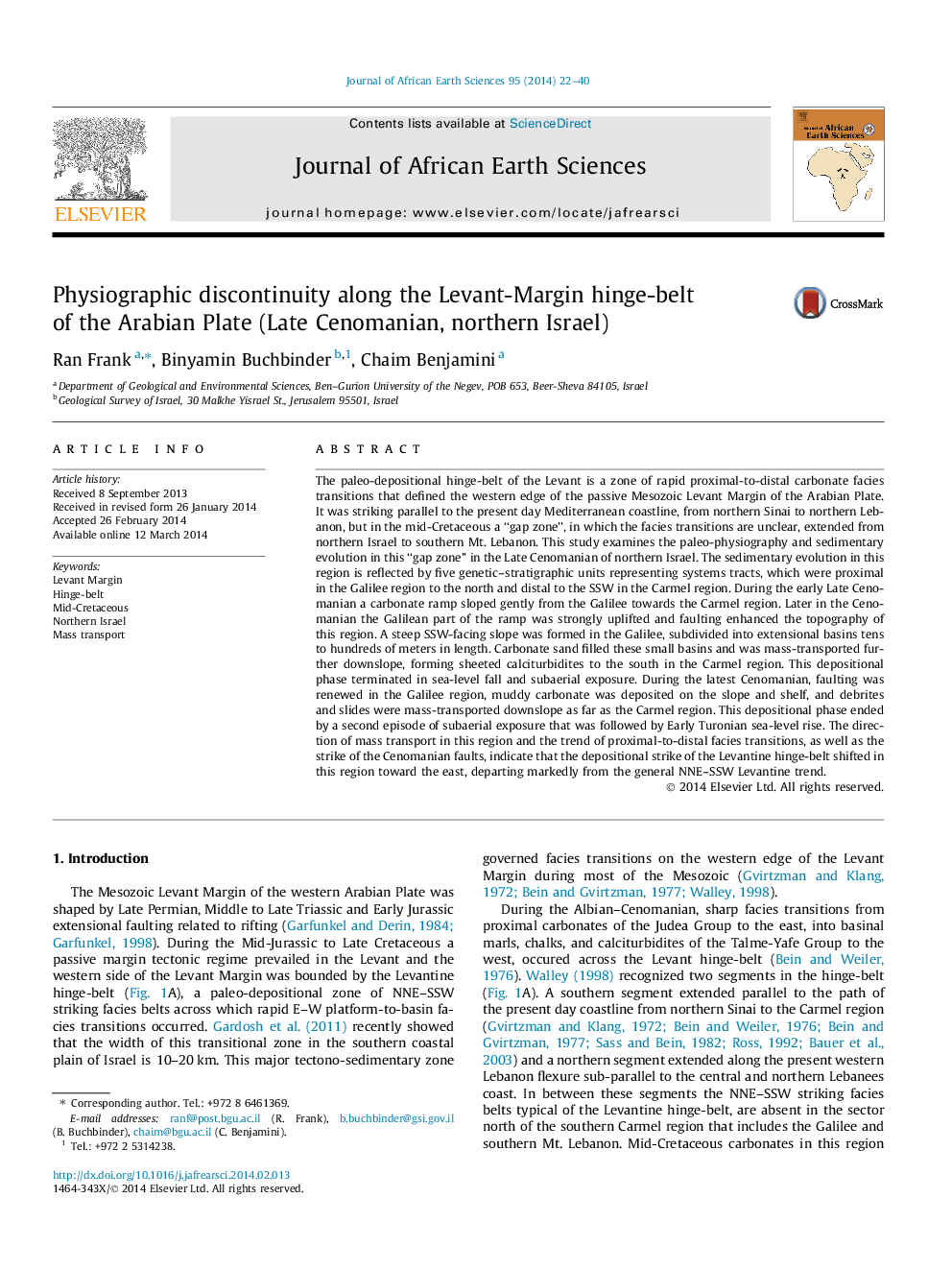| کد مقاله | کد نشریه | سال انتشار | مقاله انگلیسی | نسخه تمام متن |
|---|---|---|---|---|
| 4728816 | 1640211 | 2014 | 19 صفحه PDF | دانلود رایگان |
• We analyzed Late Cenomanian facies evolution and paleo-physiography in N. Israel.
• The N–S striking Levant Margin hinge-belt shifted to the east in this region.
• Steep and faulted Galilean slope passed into deep ramp in the Carmel at the south.
• Faulting formed steep slope that was subdivided into calcarenite-filled basins.
• Calciturbidites, debrites and slides were deposited off-slope in the Carmel region.
The paleo-depositional hinge-belt of the Levant is a zone of rapid proximal-to-distal carbonate facies transitions that defined the western edge of the passive Mesozoic Levant Margin of the Arabian Plate. It was striking parallel to the present day Mediterranean coastline, from northern Sinai to northern Lebanon, but in the mid-Cretaceous a “gap zone”, in which the facies transitions are unclear, extended from northern Israel to southern Mt. Lebanon. This study examines the paleo-physiography and sedimentary evolution in this “gap zone” in the Late Cenomanian of northern Israel. The sedimentary evolution in this region is reflected by five genetic–stratigraphic units representing systems tracts, which were proximal in the Galilee region to the north and distal to the SSW in the Carmel region. During the early Late Cenomanian a carbonate ramp sloped gently from the Galilee towards the Carmel region. Later in the Cenomanian the Galilean part of the ramp was strongly uplifted and faulting enhanced the topography of this region. A steep SSW-facing slope was formed in the Galilee, subdivided into extensional basins tens to hundreds of meters in length. Carbonate sand filled these small basins and was mass-transported further downslope, forming sheeted calciturbidites to the south in the Carmel region. This depositional phase terminated in sea-level fall and subaerial exposure. During the latest Cenomanian, faulting was renewed in the Galilee region, muddy carbonate was deposited on the slope and shelf, and debrites and slides were mass-transported downslope as far as the Carmel region. This depositional phase ended by a second episode of subaerial exposure that was followed by Early Turonian sea-level rise. The direction of mass transport in this region and the trend of proximal-to-distal facies transitions, as well as the strike of the Cenomanian faults, indicate that the depositional strike of the Levantine hinge-belt shifted in this region toward the east, departing markedly from the general NNE–SSW Levantine trend.
Journal: Journal of African Earth Sciences - Volume 95, July 2014, Pages 22–40
